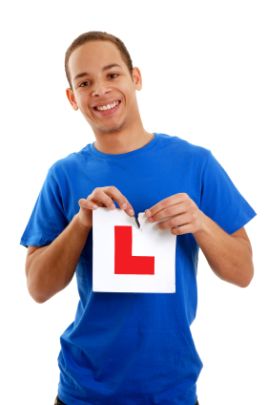The automatic car explained
In most cases, you will learn to drive with a car that has gears in the United Kingdom.
However there are people who prefer to learn in an automatic car, and there are various driving schools that have the option of letting you drive an automatic and you can pass a driving test with an automatic, you just won't be able to drive a car that has manual transmission gears with that licence. The other way round however is fine - you can learn with gears and then drive a car that has an automatic transmission.
Therefore even if you learn in a car with gears it can be useful to know how automatics work, particularly as if you get a hire car in countries such as the US then you are more than likely going to have an automatic.
One of the main differences you'll find with an automatic is that there are only two pedals: the accelerator and the brake. This can be a little disconcerting, but the reason is simple: there is no need for the clutch because that is what you use when you are changing gears on a manual transmission car.
The gearbox in the automatic car will 'work out' automatically when it should change the gear from higher to lower or lower to higher, and in addition it also makes those changes without you needing to do anything such as depress a clutch.
If you are thinking of learning in an automatic or want to find out more, then read the article on the automatic transmission explained, which is the next article in this section.
Related Articles...
More on Motorway Driving
Signs that let you know there is a motorway ahead are rectangular, and they have a green background. This shows that they are information signs on a primary road.
The part with the reference...
Vehicle Test Certificate Explained
The MOT test is no doubt something you have heard of before, but you don't pay that much interest to what it actually is before you are a car driver and faced with the prospect of requiring such a...
Reading or hearing difficulties and the theory test
If you have some sort of reading difficulty, which might be but is not limited to dyslexia, then do not panic. You can get the questions read to you in English or Welsh (or indeed if you want the...
Rules regarding the use of seat belts
When it comes to seat belts, you should be certain of what the rules are with regard to seat belt usage, and your responsibilities as the driver in terms of other passengers in your vehicle and...
Skidding: what to do if you skid
No-one wants to skid, because skidding is a hazard that can lead to potential damage for you and other road users; in other words it is a dangerous situation to be in.
However sometimes it...
Who needs to take a theory test
A theory test is part of the process required for anyone who wants to become a qualified driver in the UK. There are two stages to being a standard car driver: first passing a theory test, and then...
What to do when you sell a vehicle
When you sell a vehicle, there are some things that you have to do straight away. As soon as the vehicle is sold you have to tell the DVLA, which stands for the Driver and Vehicle Licensing Agency,...
Driving Theory
Practice makes perfect. It is a known fact that if you practice a particular skill, you get better at it. This is true of mental skills such as performing mental arithmetic: the more you try to do...
Your legal obligations as a driver
There are some basics that everyone knows when it comes to being able to behind the wheel of a vehicle. These are of course meeting the legal eyesight requirements, being older than the minimum age...
The New Drivers Act
The New Drivers Act is legislation that applies to those who have just passed their test and are categorised as new drivers, which in this legal definition refers to the first two years of passing...
Back to home page of driving theory test questions

